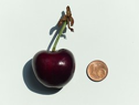|
Just when we thought we were coming out of the crazy world of 2020 and 2021, 2022 hits us with a formula shortage. I’m here to answer the most common questions that I am hearing about the formula shortage.
Why? “Current shortages have been largely caused by supply chain issues and the recent recall of several baby formula products over concerns about contamination.” Basically, there are only a few companies that make baby formula for the big brand names as well as store brand formulas. Unfortunately, if one of these companies has problems, it can lead to massive disruption in production for lots of different brands. In this case, it’s Abbott, and they’re sorry . What are families supposed to do? Well that depends. If you’re already breastfeeding or pumping, continue to do so to the extent that you’re able. If you are having difficulty breastfeeding or pumping, please contact a certified lactation consultant asap to make a plan to get things on the right track. Issues such as painful breastfeeding, painful pumping, low supply, and others, can be solved by working with an expert who knows how to solve them! If you’ve been buying retail formula, I know it’s tempting to stock up on formula when you see it in stock, but I recommend that you buy only what you need for 10 to 14 days. Stocking up on formula only adds to the shortage on the shelves for other families. If you have been using WIC to obtain formula, North Carolina is now allowing WIC families to use their waivers for different brands of formula according to what they are able to find on the shelves. You can try to find your formula at smaller local retailers or online. Importantly, you can use a different brand of formula than what you have been using. Most babies tolerate a change in formula without difficulty, if the formula is the same type that they have been taking. I also recommend that you make only the amount that the baby needs at that time, to minimize waste. It is very important that parents avoid trying to make the can of formula last longer by diluting the formula with extra water when they mix it. Mixing the formula in any way other than what the directions on the can say can be very dangerous to the baby. If the baby is on a specialized formula, or you just can’t find any formula at all, please contact the baby’s medical provider asap. What about donor milk? There is one certified milk bank in North Carolina, and obtaining milk through the bank is difficult and expensive. The milk is primarily used for babies in the NICU or medically fragile babies, and a prescription is required. Another option is casual milk sharing. But is it safe to feed my baby someone else’s breast milk? Mothers have been sharing breast milk since the beginning of babies. The better you know the donor, the more likely the donated milk will meet your standards. Start with close friends and family to see if there is anyone who has extra milk that they can share with you. To be sure the donated milk is free from bacteria and viruses, you can pasteurize the milk at home. Please click here for detailed instructions for how to safely prepare donated breast milk.
0 Comments
How Can I Get This Baby Weight Off Safely?Safe weight loss is healthy and realistic for breastfeeding women. Breastfeeding uses calories stored up during pregnancy, and a breastfeeding mother will lose 1-2 pounds a month with a normal, healthy diet (eating to hunger) and normal activity. If you want to lose weight faster, you can safely lose 1 pound a week through changes in diet and moderate exercise.
A weight loss of 1 pound a week with a healthy diet (at least 1500 to 1800 high quality calories) and moderate exercise has no effect on the fat content of the breast milk or on the baby’s growth. When you make healthy nutritional choices like eating lean meat, and cutting sugary or salty, high-fat junk food, refined flour, and high calorie drinks, you will experience healthy weight loss. Small changes can make a big difference. For example, cutting out a can of soda per day eliminates 140 calories, or 14 pounds a year! You may begin a moderate exercise program after getting clearance from your OB or midwife 6 to 8 weeks after delivery. You can safely cut 500 calories from your diet and add a moderate 45 minute exercise routine 4 days a week and lose weight without affecting the quality of your breast milk or the growth of your baby. I recommend slow, healthy, natural weigh loss through healthy nutrition and moderate exercise. If you have questions, or would like a personalized plan, I can help you! Call or email me if you would like to discuss healthy postpartum weight loss. This article from the New York Times has more information. Breastfeeding mom, are you ready for a break? Are you dreaming of a night out without your baby, or a night of sleep? Are you returning to work soon?
First of all, congratulations on exclusively breastfeeding your baby! That is a huge accomplishment and you deserve a medal! But now, you may have some questions about introducing a bottle to your breastfed baby. These tips are not meant to be rules, or make you feel guilty if you do bottle feeding a different way. They are just meant for you to pick what works for you to make bottle feeding easy and pleasant for you and your baby. Getting Started
Keeping it Safe
For Babies who are Like, Nah, I Only Eat from the Breast! If your baby is not taking a bottle, try these tips:
Keep it Fun!
Get Help!
I am very excited to now provide expert breastfeeding help at the office of Carolina Pediatrics of the Triad!
If you are looking for a pediatrician for your new baby, Carolina Pediatrics is now the only pediatric office in Greensboro offering Lactation Consultation services. Carolina Pediatrics understands the importance of on-site breastfeeding help, and they have opened up office space for Greensboro Lactation Consultants to see families at the first weight check, or whenever concerns arise. Appointments are available on Monday, Tuesday, and Thursday mornings, and drop-ins are welcome. Call, text, or email if you'd like breastfeeding help at Carolina Pediatrics. Got (Enough) Milk?
As a Lactation Consultant, I have been asked everything under the sun that has anything to do with breastfeeding, from “can I drink some coffee?” to “can I nurse with a pierced nipple?” to “how does a pump work?” But by far, the most common question I get is, “am I making enough milk for my baby?” Weighing the baby over time is the best way to know if the baby is getting enough milk, but it’s impossible to weigh the baby every feeding or every day. There are some other great ways, besides weighing the baby, to know that breastfeeding is going well. Here are 5 tips to help you know if your baby is getting enough breast milk: 1. You are feeding your baby very frequently, every time your baby acts hungry. If you are feeding your baby every time your baby acts hungry, 8 to 12 times (or more) every day, even if your baby just finished a meal, you are getting off to a great start. By offering very frequent, on-demand, unlimited feedings at an early age, you are making sure that your baby gets all the milk he or she needs, as well as triggering your body to make lots of milk in the coming weeks and months. Every time your baby latches, your baby is telling your breasts to make more milk. More feeds in the early days results in more milk in the coming months. But how will you know that your baby has a good latch and is actually getting milk?... 2. You can hear your baby swallowing. All that chugging? That is the sound of your baby getting lots of milk. If you can hear your baby swallow frequently from day 5 on, you can be sure that your baby is drinking. Babies who are getting plenty of milk from breastfeeding will suck once or twice, then swallow, and they will repeat this suck, swallow pattern until… 3. Your baby is content and relaxed after a feeding. Babies are usually tense when they are showing hunger cues. Before the feeding, many babies have their fists clenched up and their arms pulled in tight to their bodies. As the feeding progresses, and you hear frequent swallowing, watch your baby’s arm and hand. The arm and hand will began to loosen and relax, and the fingers will splay open. A hungry baby will pull their arm in if you (gently) pull the hand away from the body. A full, satisfied baby will have a relaxed arm and hand, and when you lift the hand away from the baby’s body, the arm will drop like a wet noodle. The baby’s arm is a good gauge as to how satisfied the baby is after eating. Your baby needs to have a wide mouth and a deep latch to make sure that he or she is getting enough milk. If your baby has a shallow latch, you could experience sore, painful nipples and engorgement. Another good sign that your baby is getting enough milk is that… 4. Your breasts and nipples are not in pain. Some women feel their breasts fill up every feeding, and some women don’t feel the filling as much. If you generally feel your breasts fill up with milk, and your breasts get softer during a feeding, this is a good sign that your baby is getting lots of milk. In the early days and weeks of breastfeeding, a little discomfort and tugging on the nipples is common, but toe-curling pain is not normal. If your nipples hurt so much that it takes your breath away, get someone to help you adjust your baby’s latch. Healthy, comfortable nipples are a sign that your baby is latched well. Besides frequent feeds, lots of swallowing, a content baby, and comfortable nipples, there is one other thing to look for… 5. Pees and poops What comes out of your baby says a lot about what went in your baby. If your baby is having lots of wet diapers and at least a few yellow poops every day, AND you are experiencing ALL of the above, you can be confident that your baby is getting plenty of milk and that your body is making enough. Bonus Tips! Things that do NOT mean that your baby is starving: 1. Frequent feeding. If it seems like your baby wants to eat all the time, see tip #1 above. This is not a sign that your baby is starving, it is normal for your baby to want to feed very frequently, which ensures that your baby gets fed enough and your body makes enough. More sucking = more milk! 2. Your friend’s baby takes more formula than you pump for your baby. You be you. Moms are valuable teachers for each other, but comparing your baby to another baby isn’t always a good idea. Babies who drink formula require more than babies who take breast milk. Use the tips above to be sure, and when in doubt, it’s always ok to call for a weight check. If you aren’t seeing all 5 signs that your baby is getting enough milk, or if you have any concerns about it, call your baby’s pediatrician or an IBCLC and get some help. Nurse on, mama! Breastfeeding is not supposed to hurt. A little discomfort may be normal in the early days, but toe-curling pain is not normal. Positioning errors cause about 95% of severe pain in the early weeks of breastfeeding, and often, small adjustments can make a big difference! I would love to help you breastfeed without pain. I will do a full breastfeeding assessment in your home, including a weighed feeding with my hospital-grade baby scale. If there is something else going on besides positioning, I will work with you to come up with a plan that will help you reach your breastfeeding goals while reducing your pain and keeping your baby thriving.
Call or email if breastfeeding is painful. You don't have to continue to suffer - I am available for in-home breastfeeding help usually within 24 hours of your request. One of the most common concerns I hear from moms is, "I don't know if I have enough milk." There are a few easy ways to know, so that you don't have to guess if your exclusively breastfed infant is getting enough to eat.
First of all, if you are feeding your baby on demand (not scheduling feeds, but feeding whenever he is hungry), and your baby is eating 8 times (or more) per day, that is a good sign. Secondly, by the time your baby is 5 days old, if he is having at least 5 wet diapers a day and at least 1 yellow poopie diaper per day, this indicates adequate milk intake. A third sign that your baby is getting enough is that breastfeeding is comfortable to you and your breasts are not hurting. This is a sign that your baby has a good, effective latch. It is important that you can hear your baby swallowing when he is feeding. Your baby should be visibly more relaxed at the breast after he feeds than he was before the meal. The most obvious way to monitor if your baby is getting enough is to check his weight. Obviously this is only helpful on days that your baby gets a weight check, and is not helpful on a day to day basis. Make sure you keep your baby's appointments with his doctor so that any possible problems can be identified early. If you are experiencing all of these things, that is a very good sign that breast-feeding is going well and that your baby is getting enough milk:
These are NOT signs that you aren't making enough milk for your baby:
These are signs that your baby might not be getting enough:
If you have any concerns, call your baby's doctor or an IBCLC right away. Greensboro Lactation Consultants can perform a "weighed feeding", meaning your baby will be weighed before and after a feeding. This will help us determine how much milk your baby is taking. I can be reached by phone here and by email here. In-home consultations are available usually within 24 hours of your request, so if you're worried about it, don't wait! Your new baby has a very tiny little stomach. Very small amounts of colostrum in the early days is plenty for him to grow healthy and strong. Your colostrum is perfect for him, and it’s unlikely that he will need anything else! Let’s take a look at the amount of colostrum that your baby needs in the first 4 days.  On baby’s first day of life, he needs about 2 to 10 ml per feeding, which is about the size of a cherry! In his first day of life, he will take about one ounce total.  On your baby’s second day of life, he needs about 5-15 ml per feeding – that’s about a teaspoon to about half an ounce per feeding, or about the size of a walnut. He will eat 8 to 12 times (or more) on day 2.
From month one to month 6, your baby needs 3 to 5 ounces per feeding, or a total of 25-35 ounces per day. Breastfed babies do not need as much milk as formula fed babies do, and they do not require more and more as they get older. If you have any concerns about how much milk you are producing, or if you are unsure that your baby is getting enough, please talk about your concerns with a certified lactation consultant.
I am available for in-home consultations usually within 24 hours of your request. Call or email me if you have any concerns. |
AuthorBeth Sanders, BSN, RN, IBCLC Categories
All
|




 RSS Feed
RSS Feed